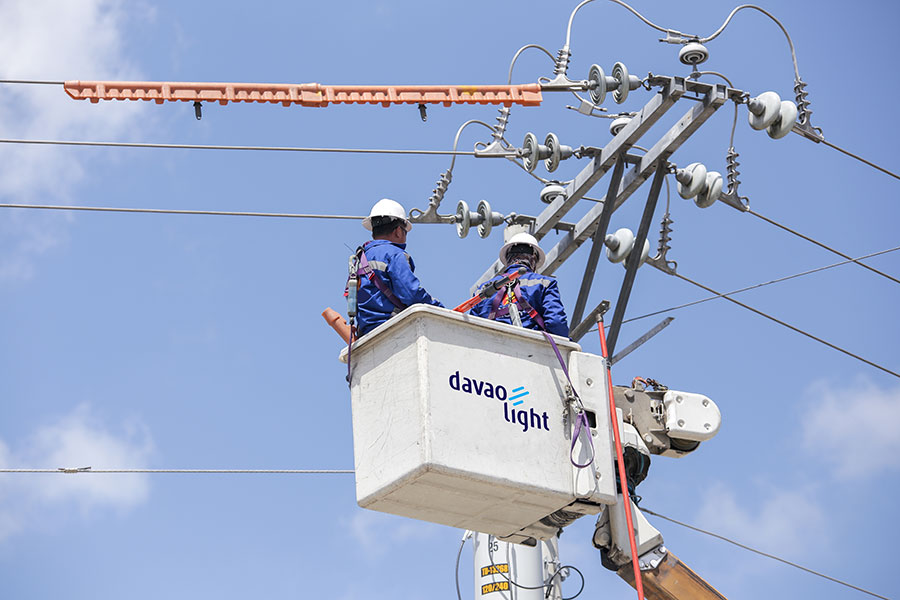Cebu and the rest of the Visayas should grow an optimum mix of traditional and renewable energy capacities to ensure power reliability and affordability, considering projected annual increases in electricity demand.
“The power demand of Cebu year-on-year is exceeding the national average. If we are to even be able to match the phenomenal growth that Cebu is experiencing right now, we would have to be very serious about generating more [power] capacity,” said Cebu Governor Gwendolyn F. Garcia during the Freeman's “Powering Cebu” business forum.
“Power is a crucial and non-negotiable ingredient to progress,” she added. “Power gives life to the economy. If there is a lack of [electricity], then there is no economic growth to speak of.”
With projections that Cebu and the Visayas will sustain its economic expansion, the Department of Energy (DoE) anticipates that the region’s electricity demand will grow to the point that it will require a big chunk of the available power capacity by 2050, together with Mindanao.
“For the Visayas, we could have… dependable capacity of 3,296 megawatts. That will just be sufficient to provide the demand and the appropriate reserves. That means we will continuously rely on the transfer of energy from Luzon and Mindanao. However, take note that Mindanao is also growing fast,” said DoE Assistant Secretary Mario C. Marasigan.
“Luzon sits at a relatively comfortable reserve margin of 300 to 700 megawatts. Similarly, Mindanao has around a 25-30% power reserve margin. If you compare that to Visayas, Visayas is around 8%. So you can see the stark contrast between the Luzon, Visayas, and Mindanao grids,” added Aboitiz Power Corporation (AboitizPower) Thermal Group Chief Engineering and Projects Officer Don Paulino.
The National Grid Corporation of the Philippines (NGCP) indicated that Cebu’s total plant capacity today is 1,123 megawatts. With peak demand going as high as 1,223 megawatts, as was recorded in May 2024, Cebu currently augments the shortfall of 100 megawatts through interconnections to Luzon and Mindanao.
Peak demand in the Visayas is seen to increase from 2,464 megawatts in 2023 to 2,864 megawatts by 2026 and to 10,678 megawatts by 2050, with Cebu expected to demand as much as half. The DoE also pointed out that Cebu serves as the connection hub for the entire Visayas, with electricity imports from Luzon and Mindanao passing through Cebu before it serves the rest of the Visayan islands.
With the projected increase in electricity demand amidst the influx of more variable renewable energy capacities like solar and wind, AboitizPower’s Paulino said that the current fleet of baseload sources will provide balance and complement the intermittency.
“The direction to have renewable energy is very important, not just from a climate change [lens], but also from a mix perspective,” he maintained. “However, because the sun can only provide power from 10am to 2pm, what happens whenever there is no sun? What happens when there is no wind? For us to be more renewable, we need to be able to complement that with a proper baseload.”
The DoE previously clarified that power producers can opt to build coal-fired power plants exempt from the country’s coal moratorium to serve as baseload. Citing the list of private sector-initiated projects and inputs from generation companies and the NGCP, these 51 potential coal plants have a cumulative capacity of 20,300 megawatts.
“Even if we have the coal moratorium, we have accounted for more than sufficient coal thermal projects that are not covered by the moratorium. These are those coal thermal projects that have been approved as committed and indicative projects before we issued the coal moratorium policy in 2020,” Marasigan said. “One of those projects will be in Cebu, and hopefully this could augment the baseload requirement in Metro Cebu.”



